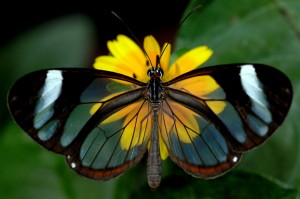By now I’m sure you’ve heard Donald Trump‘s California rally declaration “There is no drought”.
It’s doubtful that Trump would actually deny the record-breaking drought conditions in California over the last several years; perhaps he’s just not using the word “drought” properly. So, let’s define the term. Pretty much any reliable source will give you a similar definition, but we’ll go with the USGS :
“A drought is a period of drier-than-normal conditions that results in water-related problems.”
When Trump said that there is no drought he was probably not referring to a climatic phenomenon, but rather the allocation of water resources by humans, which some agricultural supporters, including former presidential candidate Carly Fiorina, have come to call a “man-made” drought. Essentially, Trump is supporting the idea that there is enough water in California to supply unrestricted quantities to farmers, but it’s not being distributed in their favor. Specifically, he refers to the decades old dispute between conservationists and farmers in the The Sacramento-San Joaquin Delta region.

Farmers in the area need enough water to make a living from their crops and many feel too much is being used to protect the ecosystem, especially when water is scarce. According to Trump, the water supply is being used ‘‘to protect a certain kind of three-inch fish.’’ This fish is the Delta Smelt, a tiny, uncharismatic species whose descent toward extinction has fueled the tension between environmentalists and agriculturalists for many years preceding the present drought conditions.

From a farmer’s perspective, it’s easy to understand the frustration that amounts when your fields are left fallow to help save a seemingly insignificant fish. But the environmental impacts of the drought go way beyond just saving the little Delta smelt. Many other species of fish, like salmon, are dwindling in the Delta, not just because of the drought, but also due to compounding factors like pollution and the spread of invasive species. This is important because these fish all play a vital role in the ecosystem and in the livelihood of local fisherman. The Delta smelt, for example was once so abundant it was commercially valuable and was a food source for other commercially valuable fish . The smelt feeds on tiny crustaceans, one of which is an invasive copepod that is taking over the native species in the delta. But now too few of the smelt are left to make an ecological impact. Further fish extinctions in the Delta could disrupt the natural food chain and have disastrous effects on the environment.

The real root of the problem here is not how water is being allocated, it’s that this so-called “man-made drought” is occurring in a totally human-constructed ecosystem. Over time, the need to bring water in for agriculture completely reshaped the waterways. Design issues in the existing pump and irrigation systems have caused water levels to decrease in rivers and salinity levels to rise, causing huge problems for native species and inviting in invasive species. In the past, compounding effects of drought conditions and water management issues have caused the spread of the harmful, invasive overbite clam.

It’s a complicated issue. Agriculture is the industry of the Sacramento-San Joaquin Delta region and the farmers need to be a priority in the equation, but at what cost? The farms may recover after the drought, but we can’t get back species that are lost or the role they played in the ecosystem. Plans are in the works to improve the current water management systems, but with mixed support. I can’t propose a solution. I don’t have any experience in farming, hydrology, or policy making. Trump doesn’t either. But maybe we can both try to see more than one side of the story.

